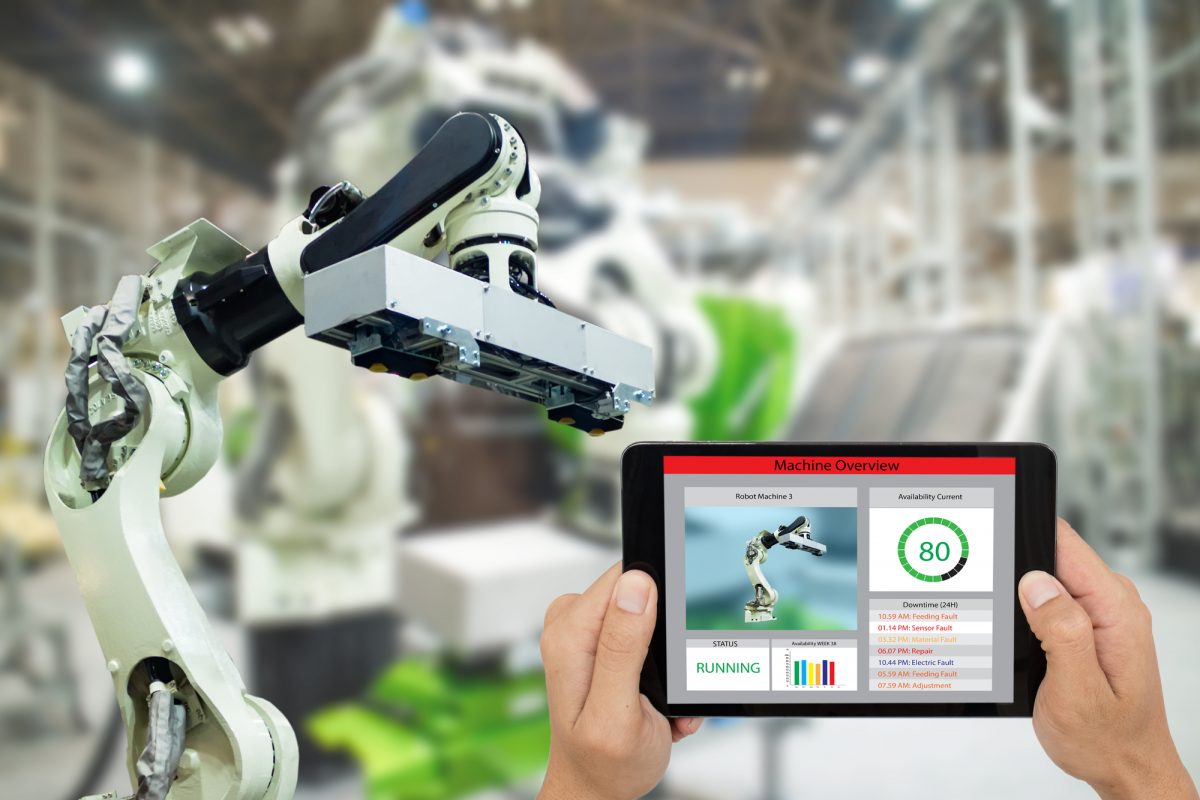The “internet of things” is one of the big tech trends these days, and it’s easy to see why that is the case. By turning every electronic device into a connected device, business owners can achieve a level of monitoring that was never possible before. Better still, they can automate many essential functions, eliminating waste and promoting efficiency. With that in mind, let’s look at some of the most common applications of IoT in manufacturing plants.
1. Smart Inventory Management
For any business manager, taking inventory is one of their most irritating tasks. You have to go through a crowded warehouse, counting boxes and tallying each product. Even worse, that information will be outdated very quickly, as more inventory is used on a daily basis. IoT devices offer an easier way to manage inventory.
Not only is this great for convenience, but it also has security benefits. Goods in storage can be stolen or intercepted, and this happens somewhat frequently. By using smart tags on every pallet or crate, it is possible to track every shipment from one point to the other.
2. Better Quality Control
All of us have bought a defective product at one time or another. This is normally not a big deal, mostly because a company cannot help but make a few defective products. When they’re cranking out thousands per day, it’s hard to avoid a few mistakes. However, the use of smart devices at every stage of the manufacturing process can greatly reduce the risk of product defects.
Unlike traditional quality control, which focuses only on the endpoint, IoT-aided quality control can monitor the whole process. Thus, if the sensors detect anything abnormal during that process, it will already know to send those products for further review. For instance, let’s say that a certain temperature is required to create a certain product. If that temperature gets too far off, defects are much more likely to result. Thus, the computer knows that these particular products are suspect.
3. Greater Precision On The Floor
Employee mistakes are another cause of product defects. Once again, this kind of thing is going to happen from time to time, but it can be detected more efficiently in an IoT-enabled workplace. Rather than having to constantly pace the shop floor and watch everyone like a hawk, a floor manager can monitor everything from the comfort of their office.
Basically, it works by setting up “checkpoints” at key parts of the manufacturing process. The product is periodically checked by sensors (usually after each step) before it is allowed to move on to the next phase. Things like break beams and RFID sensors can detect problems more efficiently than a human could ever hope to do. Even if the product is only a few microns too small or large, it can be detected by a well-made IoT device.
4. Easy Streamlining Of Processes
We’ve talked about machines and people, so let’s discuss the industrial processes by which product is manufactured in your plant. When you are dealing with a lack of efficiency, it is possible that the process itself is to blame. Even if your employees and managers are of the highest quality, they won’t do well if you give them an inefficient process.
This brings us to one of the most interesting things about IoT devices: They don’t just collect data. They can also use AI capabilities (somewhat limited, of course) to analyze and aggregate that data. This allows for quicker recognition of key trends, allowing for a quicker response to any problems that may occur. Over time, that helps all your manufacturing processes to be more streamlined.
5. Quicker Diagnosis And Repair Of Equipment
From time to time, your manufacturing equipment is going to break down. When this happens, it will always result in lost productivity (and, consequently, lost profit). That being said, an IoT setup can help to minimize those problems and get them fixed more quickly. As with many other aspects of IoT in the workplace, it all comes down to better monitoring capability.
By putting sensors on that manufacturing equipment (particularly at its weakest points), you can create a system that diagnoses problems without any need for human input. It is similar to the act of hooking your vehicle up to a diagnostic tool. The IoT device looks at the problem, and gives an error code, which can then be used by technicians to do more efficient repair work.
6. Better Safety In General
As you might imagine, the use of IoT sensors at key places can also help a lot with safety issues. Whenever a workplace accident occurs, it is usually necessary to determine who was at fault. This is mostly done for financial reasons, as an injured worker can potentially claim compensation if the accident was caused by company negligence.
To avoid these costly issues (lawsuits are not cheap!), safety managers can identify the most high-risk areas and processes. Once that is done, they can place sensors in these places and keep tabs on all events in their vicinity. Thus, when it is time to investigate an accident and determine fault, safety managers will have a lot more information at their disposal.
7. Reduction Of Waste
Businesses tend to waste money a lot, and it’s usually due to human error. One miscalibration of the equipment can ruin an entire batch of products, leading to a lot of lost profit. Needless to say, IoT sensors can do a lot of good here. While waste cannot always be avoided, early detection will minimize their impact.
Conclusion
These are just a few quick examples of the many ways in which IoT technology can make your manufacturing plant more productive. We are sure that you can apply some creativity and think of a few more, but this should be enough to get you started. The information age is here, whether we like it or not, and we might as well use its benefits to our advantage. If you agree, please feel free to fill out the contact form below.







